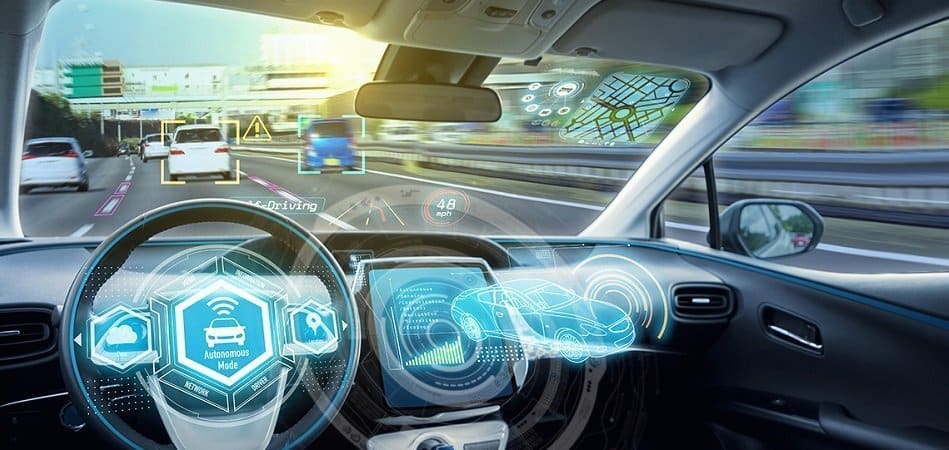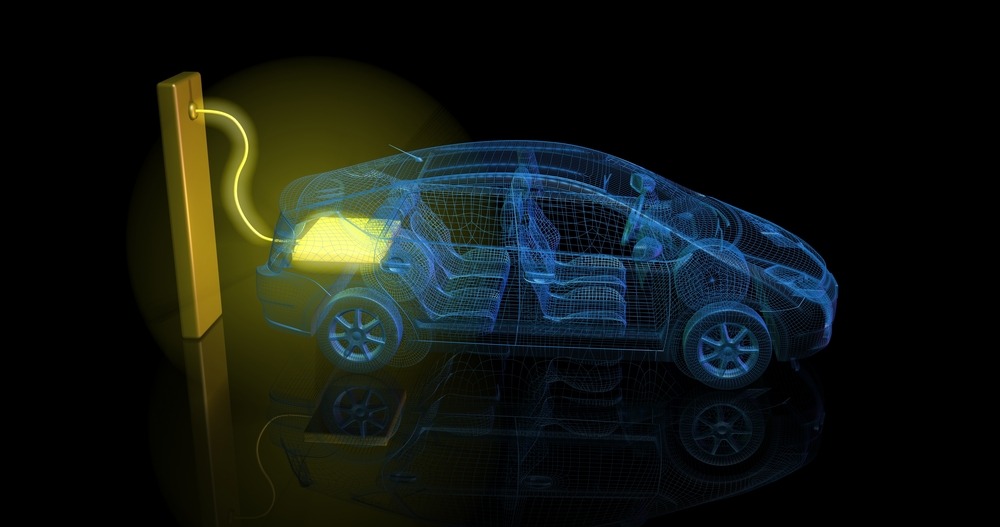Top 10 Breakthrough Automotive Technologies
Discover the top 10 new automotive technologies revolutionizing the way we drive and interact with our vehicles.

New automotive technology is swiftly reshaping the driving experience, and we're here to map out the top revolutionaries. From self-driving cars and emission-cutting innovations to advanced safety systems, the road ahead is brimming with cutting-edge developments. In this journey through the latest vehicular tech, we aim to highlight how these advancements are steering us towards a smarter, safer, and more sustainable future. So buckle up, and let's explore the wonders technology has parked in our garage!
New Automotive Technology Unveiled
Imagine stepping into a world where cars communicate with each other, avoid accidents on their own, and even drive themselves. This isn't a scene from a sci-fi movie – it's the future we are rapidly driving towards. New automotive technology is undeniably revolutionizing our daily commutes, long-distance travels, and our overall interaction with vehicles. In this article, we'll deep dive into the ten most groundbreaking technologies that are not just imminent but are already beginning to take the wheel.
Table of Contents
- The Rise of Autonomous Driving
- Electric Vehicle Innovations
- Connected Car Technology
- Breakthroughs in Battery Technology
- Augmented Reality Dashboards
- Advanced Driver Assistance Systems (ADAS)
- Smart Infotainment Systems
- Vehicle-to-Everything (V2X) Communication
- 3D-Printed Car Parts
- Smart Mobility Solutions
The Rise of Autonomous Driving

The concept of self-driving cars, once a fantasy, is now rapidly becoming a reality. The autonomous driving revolution is powered by a blend of artificial intelligence (AI), sensors, and machine learning. This trinity works in unison to interpret traffic, navigate roads, and avoid obstacles without human intervention.
Here's what sets the stage for this exciting chapter in automotive technology:
- Lidar: Light Detection and Ranging technology that renders a 3D map of the car's surroundings.
- Radars: These sensors detect distance and velocity of objects around.
- Cameras: Offering a multi-angle view of the vehicle's exterior.
- Software Algorithms: They process the data to make real-time driving decisions.
Autonomous driving promises to reduce accidents caused by human error, offer mobility for those unable to drive, and even free up our time during commutes. Yet, hurdles remain, including regulatory concerns and the immense challenge of creating an AI that can navigate the unpredictable nature of real-world driving.
Electric Vehicle Innovations

By now, almost everyone has heard of Tesla, but the wave of electric vehicle (EV) innovations does not stop there. The shift from fossil fuels to electric is more than just an environmental statement; it's a new era of automotive performance. While range and charging times initially held EVs back, recent advancements are charging ahead with solutions.
Key improvements include:
- Longer range batteries offering over 300 miles per charge.
- Fast charging networks that replenish battery life in minutes, not hours.
- Models with performance specs that rival or exceed their gasoline counterparts.
Beyond the technology itself, a growing ecosystem of charging stations and government incentives are propelling EVs to new heights of popularity and practicality.
Electric Vehicle Autonomy
As EV technology evolves, we're also seeing a convergence with autonomous driving systems. The combination is setting the stage for a future of clean, self-driving fleets that could dramatically transform urban transport and beyond.
Connected Car Technology
Imagine cars that not only drive themselves but also communicate with other vehicles and infrastructure. Welcome to connected car technology, a system where vehicles speak a common digital language, sharing information about traffic, weather, and road conditions. It encompasses everything from vehicle-to-vehicle (V2V) communications to vehicle-to-infrastructure (V2I) interactions.
Some benefits and features of connected car technology include:
- Predictive maintenance notifications based on real-time vehicle diagnostics.
- Enhanced GPS with live traffic updates for optimized routing.
- Remote control features, enabling drivers to start their car, lock doors, or even check fuel levels from their smartphones.
This interconnectivity not only boosts convenience and safety but also paves the way for new services, such as on-demand car-sharing options.
Breakthroughs in Battery Technology

Batteries are the lifeblood of electric vehicles, and their technology is going through a period of intense innovation. The race is on to develop batteries that are lighter, more powerful, and quicker to charge. Some of the game-changing developments include:
Solid-State Batteries: These could potentially offer greater energy density and safety compared to the current lithium-ion batteries. Automakers like Toyota and BMW are investing heavily in this technology with hopes of bringing it to the mainstream market.
Wireless Charging: Imagine never having to plug in your EV for a charge. Wireless, or inductive, charging systems are being tested that allow a vehicle to recharge simply by parking over a charging pad.
Such advancements are not just making EVs more user-friendly, they're also breaking down one of the biggest barriers to widespread adoption.
Augmented Reality Dashboards
Our dashboards have come a long way from simple speedometers and fuel gauges. Augmented reality (AR) dashboards are transforming them into interactive displays that project vital information onto the windshield, allowing drivers to keep their eyes on the road. This type of heads-up display (HUD) can show everything from navigation arrows to hazard detection alerts.
What's particularly exciting is AR's ability to enhance driver perception. For instance, if you're driving in fog, the system could highlight the edges of the road or the tail lights of the car in front of you.
As AR technology progresses, it's set to advance hand in hand with autonomous and connected car features, providing a seamless and intuitive interface between humans and machines.
Interfaces of the Future
Further down the line, we can expect dashboards to incorporate gesture and voice controls, allowing drivers to interact with their car's systems without ever having to press a button. Coupled with customization options, the driving experience will become more personal and engaging than ever before.
Advanced Driver Assistance Systems (ADAS)

Advanced Driver Assistance Systems, commonly referred to as ADAS, serve as the watchful co-pilots of modern vehicles. These systems encompass a wide range of features designed to prevent accidents and offer an additional safety net. Some of the most notable ADAS technologies include:
- Adaptive Cruise Control: This system automatically adjusts your speed to maintain a safe following distance from the vehicle ahead.
- Lane Keeping Assist: It gently steers you back into your lane should you start to drift without signaling.
- Automatic Emergency Braking: This can detect an imminent collision and apply the brakes if you don't react in time.
While these systems make driving safer, they also serve as stepping stones on the path to fully autonomous vehicles.
Smart Infotainment Systems
Today's cars offer more than just a ride; they provide an experience. The heart of this is the infotainment system, which has evolved into a sophisticated hub for both entertainment and information. These systems sync with our smartphones, give voice-controlled access to navigation, and can stream our favorite music or podcasts on the go.
Key features include:
- Large touchscreen displays with intuitive interfaces.
- Integration with Apple CarPlay and Android Auto.
- Real-time vehicle diagnostics and connected services.
With each update, these systems become more tailored to individual preferences, learning from our habits and routines to deliver a truly personal touch.
Vehicle-to-Everything (V2X) Communication
"Talkative" cars might soon be the norm with the advent of Vehicle-to-Everything (V2X) communication. This technology enables cars to interact with nearly everything in their vicinity – other cars, pedestrians, traffic signals, and even the road itself. V2X is poised to dramatically improve traffic flow, reduce collisions, and enhance pedestrian safety.
Such communication is facilitated by:
- DSRC (Dedicated Short-Range Communications): A wireless communication technology specifically designed for automotive use.
- Cellular networks: Utilizing existing cellular technology for wider area communication and connectivity.
With V2X, our vehicles are not just isolated travel pods; they're an integral part of a larger, more intelligent transportation network.
3D-Printed Car Parts

The manufacturing revolution has arrived in the automotive world via 3D printing. This technology allows for the fast and efficient production of complex parts that would be too costly or impossible to make with traditional methods. It's not just for prototypes anymore; 3D-printed parts are making their way into production vehicles.
Benefits of 3D printing in the automotive industry:
- Reduction in part weight, leading to improved fuel efficiency.
- Customization options for consumers.
- Decreased manufacturing waste, aligning with sustainability goals.
As printers become more advanced and materials more robust, the potential for 3D printing within the industry is bound to accelerate.
Custom Cars for the Masses
In the near future, 3D printing could allow buyers to customize their vehicles to a degree previously unimaginable, from tailored interiors to specially designed car bodies.
Smart Mobility Solutions
The term 'smart mobility' refers to the use of technology to enable more efficient and sustainable forms of transportation. The emergence of smart mobility solutions is not just reshaping how vehicles are used but also how people and goods move across urban environments.
Here's what smart mobility encapsulates:
- A variety of transport options such as car-sharing, bike-sharing, and scooters that are easy to access and use via apps.
- Improved public transport systems with real-time tracking and mobile ticketing.
- Data analytics to predict travel demand and optimize routes.
As cities continue to grow, smart mobility is seen as a key component in reducing congestion and improving air quality.
As we enter a new chapter in the automotive world, these new automotive technologies signal a bright future. They not only promise to make our travels safer and more seamless but also usher in a new age of sustainability and efficiency. For car enthusiasts and everyday commuters alike, these innovations mean that driving will never be the same again.
Adapting to and adopting these technologies will be essential for everyone in the automotive industry, from manufacturers and suppliers to dealerships and end consumers. As we shift gears into the future, staying informed and engaged with these trends will be crucial. And that's where AutoInsiderHub steps in, driving insights into the automotive world, with the latest news, analysis, and trends to keep you on the cutting edge of automotive innovation.
For more insights and updates on automotive technology, stay tuned to AutoInsiderHub – your resource for all things automotive!
What's Your Reaction?


































































